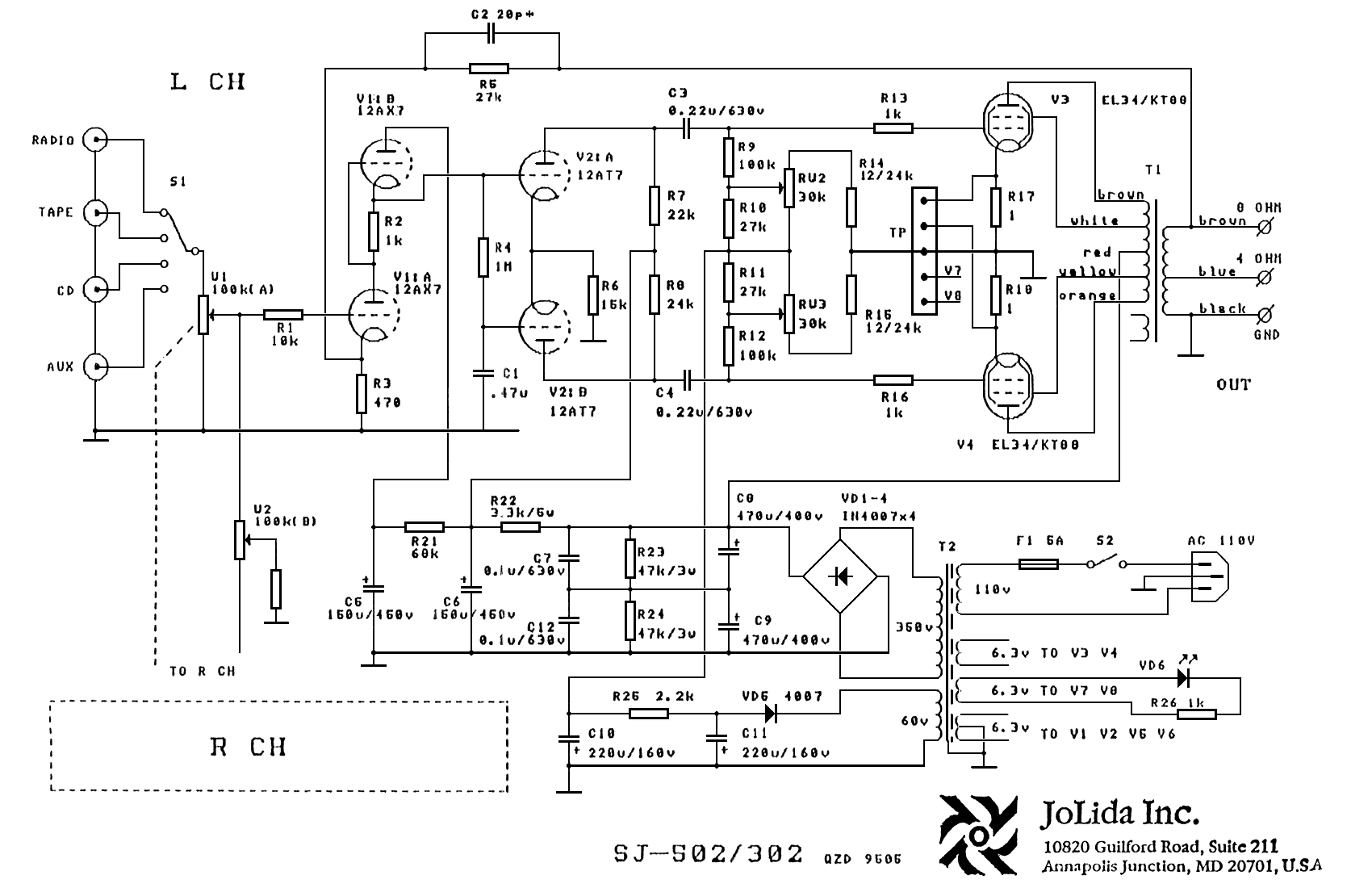Si je puis me permettre, ce n'est pas vraiment sérieux de proposer des modifs comme :
"
Riken Ohm 1 watt, 1% Carbon resistors utilized in the grid stopper location. These combine the transparency of a good metal film with the warmth of a good vintage carbon composition resistor without the noise and drift.
Mills 5 watt non-inductive resistors replacing the Tube emitter cushion resistors.
Bybee Quantum Purifiers in B+ Voltage between mains transformer and rectifying bridge"
1. Un stop est un stop, avec une très faible ddp et donc une influence de composition totalement négligeable. Ici une film carbone Riken Ohm se comportera au pouième comme une film métal BCcomponents qui se comportera comme...
Sinon le texte est partiellement repompé sur le pipô de l'ami Steve "Angela" M. qui distribue Riken aux Tazunis, en VO : "
These combine the transparency of a good metal film with the warmth of vintage Allen Bradley carbon composition resistors without the noise and drift."
2. Faut m'expliquer ce que sont des "
Tube emitter cushion resistors". AMA une erreur de traduction gouglesque du tong à l'anglois joyeusement reprise par tous les zozodiophiles qui ne connaissent rien à rien - désigne probablement les 1R sur les cathodes des tubes de puissance permettant de mesurer le courant de repos.
3. Les "
Bybee Quantum Purifiers" relèvent du charlatanisme le plus total.
Comme ils disent sur leur site : "
Bybee Quantum Purifiers operate on the quantum mechanical level to regulate the flow of electrons that make up the signal (picture a metering light regulating freeway traffic flow). Current flow within the Quantum Purifier is unimpeded and ideal (think of the unencumbered flow of traffic on a lightly traveled expressway). During transit through the Quantum Purifier, quantum noise energy is stripped off the electrons, streamlining their flow through ensuing conductors. Unwanted quantum noise energy dissipates as heat within the Quantum Purifier rather than emerging as a layer of contamination residue over the audio/video information."
Si c'est prouvé ça mérite au moins deux prix Nobel !
Je n'ai pas le schémou de cet ampli, mais il semble que tous les Jolida reprennent la même architecture : SRPP en entrée, différentiel sommaire, équilibrage de polar zarbi, PT en UL, etc.
Exemple :

Là il y a du boulot pour de vraies améliorations, mais comme je présume que le truc est monté sur cuivre il est quasi-impossible d'intervenir proprement.








